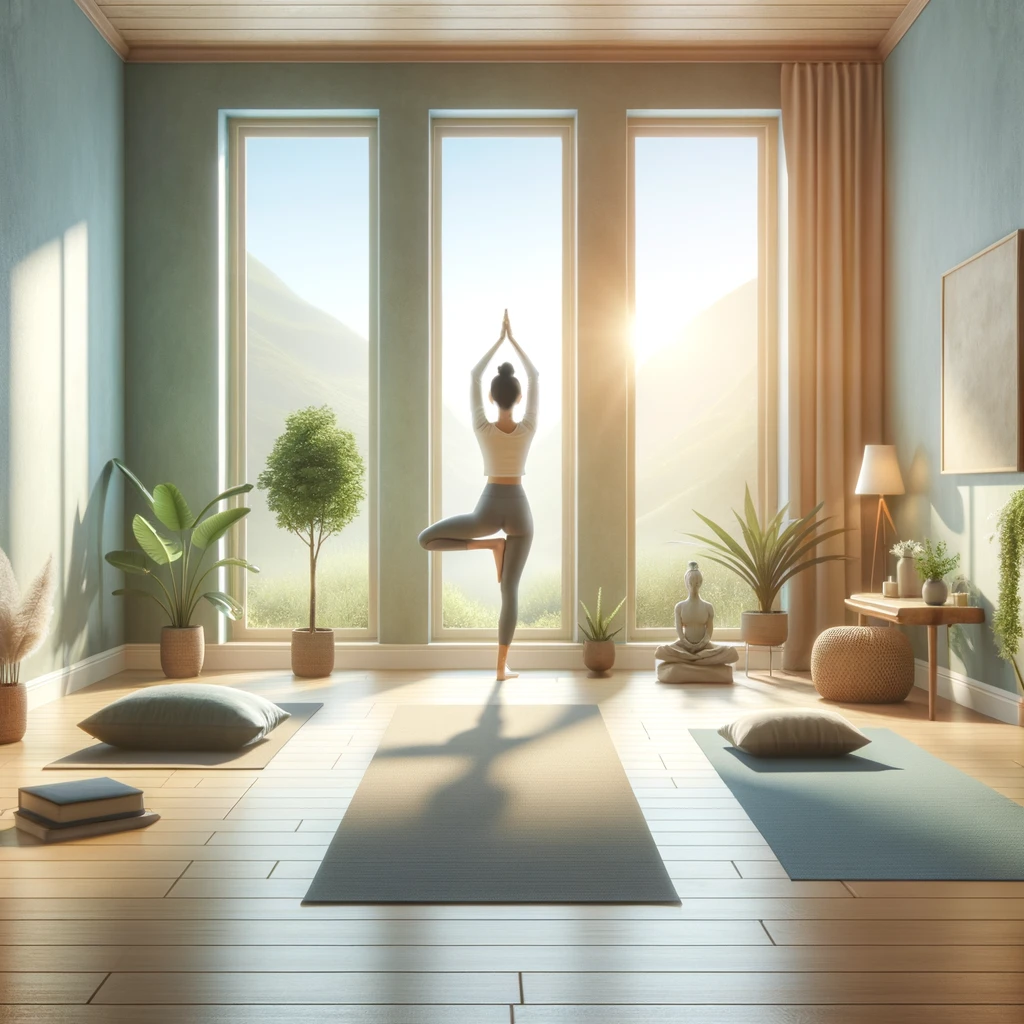Yoga, much more than a form of exercise, is a holistic discipline that enhances physical, mental and emotional health. Apart from building strength and flexibility, it offers deeper benefits like stress relief, inner peace, and a connection with oneself. This guide is an accessible introduction to the world of yoga positions for beginners, providing an overview of basic yoga principles, positions, and practices.
Table of Contents
- Introduction to Yoga: Benefits and Origins
- Understanding the Basics: Yoga Terminology and Equipment
- Getting Started: Essential Yoga Positions for Beginners
- Detailed Breakdown: Positions for Static and Active Yoga
- Common Mistakes to Avoid: Correcting Yoga Postures
- Tips to Mastering Your Yoga Practice: Consistency and Patience
- Building on the Basics: Next Steps in Yoga Practice
- Resources for Continued Learning: Books and Online Communities for Yoga Positions for Beginners
- FAQ: Yoga Positions for Beginners: Your Ultimate Guide
- About Dr. Gary Danko
- Connect with Dr. Danko
- Related Articles
Introduction to Yoga: Benefits and Origins
Yoga is an ancient practice that originated in India over 5,000 years ago. It was traditionally seen as a spiritual discipline that leads to the union of one’s physical, mental and spiritual self. While the practice of yoga has evolved and expanded globally, its primary aim remains the same: to create a balance within the self through diverse techniques. Physically, yoga can help improve strength, flexibility, and balance. Mentally, it can reduce stress, boost concentration, and promote a sense of wellbeing.
Understanding the Basics: Yoga Terminology and Equipment
Getting familiar with common yoga terminologies can help a beginner easily follow instructions in a yoga class or in self-practice. Terms like asana (yoga pose), pranayama (breath control) and savasana (relaxation pose at end of session) are commonly used. As for the equipment, a yoga mat is essential for providing comfort and grip during the poses. In addition, yoga blocks and straps can be helpful in modifying asanas for beginners.
Getting Started: Essential Yoga Positions for Beginners
Beginning a yoga practice doesn’t have to be overwhelming. There are a number of asanas that are simple, yet effective for beginners. For instance, Tadasana (Mountain Pose) is a basic standing pose that fosters good posture and balance. For increased flexibility and strength, poses like Adho Mukha Svanasana (Downward-Facing Dog) and Bhujangasana (Cobra Pose) can be useful.
Detailed Breakdown: Positions for Static and Active Yoga
Yoga practice can be broadly divided into static and active forms, both of which involve distinct asanas. Static yoga involves holding poses for longer periods without movement, suitable for meditation and stretching. It includes poses like Savasana (Corpse Pose) and Balasana (Child’s Pose). On the other hand, active yoga involves moving through a sequence of poses, such as Vinyasa Flow where the movement is synchronised with the breath.
Common Mistakes to Avoid: Correcting Yoga Postures
Incorrect yoga postures can lead to injuries and hamper the effectiveness of the practice. Some common mistakes include straining or rushing into a pose, holding one’s breath, and losing focus on the alignment. It’s essential to ensure proper alignment, engage in mindful breathing, and be aware of your body’s limitations.
Tips to Mastering Your Yoga Practice: Consistency and Patience
Mastering yoga requires more than learning the poses correctly – patience and consistency are key. Ideally, set up a consistent schedule and dedicate specific time each day to your practice. Furthermore, ensure you’re patient with your progress; yoga is a journey, not a destination. As you become more comfortable with the yoga poses for beginners, you can gradually start exploring more challenging asanas.
Building on the Basics: Next Steps in Yoga Practice
Once you’re proficient in basic poses, you can start to incorporate more challenging poses into your routine, move on to more advanced forms of yoga, or explore other facets of yoga such as meditation and pranayama. Engaging with a yoga community, whether online or onsite, can offer support, advice and variety to your practice.
Resources for Continued Learning: Books and Online Communities for Yoga Positions for Beginners
Numerous invaluable resources can foster deeper understanding and continued learning in yoga. Books like “Light on Yoga” by B.K.S. Iyengar provide detailed insights into asanas, pranayama and philosophy. Online communities like Yoga Journal and Yoga International offer a wide range of resources, including articles, videos, guides, and even online classes.
The world of yoga is broad and multifaceted, offering numerous ways to benefit your body, mind, and spirit. Starting with the basics, and gradually progressing with patience and consistency, can make the journey more manageable and enjoyable. Above all, practice mindfulness and stay connected to your body to make yoga a truly enriching experience.
Ready to finally break free from dieting struggles and rewire your habits for good? Join my Free Subconscious Weight Loss Course today. In just 5 short audio activations, you’ll dissolve cravings, end sabotage cycles, and align your mind and body for natural weight release. Complete the course within 4 days to unlock lifetime access and connect with our private support community—all at no cost. Don’t wait—start your free activation now and experience the shift from within.
FAQ: Yoga Positions for Beginners: Your Ultimate Guide
Q: What are the 12 basic yoga poses for beginners?
A: The 12 basic yoga poses (asanas) that form the foundation of many practices include:
- Mountain Pose (Tadasana)
- Downward-Facing Dog (Adho Mukha Svanasana)
- Plank Pose
- Triangle Pose (Trikonasana)
- Tree Pose (Vrikshasana)
- Warrior I (Virabhadrasana I)
- Warrior II (Virabhadrasana II)
- Seated Forward Bend (Paschimottanasana)
- Bridge Pose (Setu Bandhasana)
- Child’s Pose (Balasana)
- Cobra Pose (Bhujangasana)
- Savasana
Q: What is the starting position for yoga?
A: The starting position for most yoga sessions is the Mountain Pose (Tadasana). It’s a basic standing pose that helps you focus on your breath and find your center. It sets the foundation for alignment, posture, and concentration for your practice.
Q: What are the basic steps to do yoga for a beginner?
A: For beginners, the basic steps to start yoga include:
- Find a comfortable, quiet space.
- Choose a time of day when you can be consistent.
- Begin with simple breathing exercises to center your mind.
- Start with basic poses, focusing on form and breath control.
- Gradually increase the duration and complexity of poses.
- End each session with a relaxation pose, like Savasana.
Q: What type of yoga is best for seniors?
A: Gentle yoga styles are best for seniors, such as Hatha, Iyengar, and Chair Yoga. These forms emphasize slow movements, proper alignment, and breath control, making them ideal for maintaining flexibility, strength, and balance at an older age.
Q: What is the most popular yoga pose?
A: The Downward-Facing Dog (Adho Mukha Svanasana) is one of the most iconic and popular yoga positions for beginners. It’s a staple of many yoga routines, known for its ability to stretch and strengthen the entire body, while also calming the mind.
About Dr. Gary Danko
Dr. Gary Danko, PhD, is a renowned expert in metaphysical psychology and a certified hypnotherapist based in Clearwater, Florida. With a profound commitment to fostering wellness, Dr. Danko specializes in unlocking the human mind’s potential, guiding individuals towards a healthier, happier, and more fulfilling life. His holistic approach integrates spirituality, physical health, and mental well-being, offering a unique perspective on personal growth. Passionate about deep, meaningful conversations, Dr. Danko explores the intricacies of the human spirit and mind, providing insights that enlighten and inspire.
Connect with Dr. Danko
Are you ready to embark on a journey towards a more fulfilling life? Discover the transformative power of metaphysical psychology and hypnotherapy with Dr. Gary Danko. Schedule your Free Discovery Session today and take the first step towards unlocking your true potential. Whether you’re seeking spiritual growth, mental clarity, or physical well-being, Dr. Danko’s expertise will guide you on the path to success. Don’t miss this opportunity to transform your life. Contact Dr. Danko now for your free session and experience the change you’ve been longing for!
Related Articles
Top 10 Dire Harmful Effects of Vaping vs. Cigarettes
Plant Based Diet: Easy and Flavorful Foods!
Understanding Sociopaths and Narcissists: The Danger They Pose to Society
Beware of the Manipulation by Common Cults
Exploring ACT Therapy: Definition, Benefits, and Applications


Add your first comment to this post
You must be logged in to post a comment.